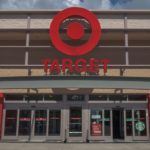The housing market is facing the possibility of a recession reminiscent of the 1980s, driven by persistently high mortgage rates, according to Wells Fargo. Despite the U.S. economy’s overall resilience in the face of numerous recession predictions, the housing market paints a different picture.
Mortgage rates hovering around 8% have coupled with substantial increases in home prices during the pandemic, eroding housing affordability and causing a slowdown in market activity. The longer these elevated mortgage rates persist, the more borrowing costs rise, potentially pushing the housing market into a recession, Wells Fargo economists have warned in a recently released commentary titled “Rising Borrowing Costs Stand to Tip the Housing Sector Back Into Recession.”
For the first time in over two decades, the 30-year fixed mortgage rate reached 8% in early October. Although rates may see a decline as the Federal Reserve eases its stance on inflation, financing costs are expected to remain high compared to the pandemic’s historic lows. Wells Fargo reported that the prospects for a “housing rebound” are fading as mortgage rates continue to rise.

Wells Fargo economists, Charlie Dougherty and Patrick Barley, drew parallels between the current housing climate and the 1980s housing downturn. Similar observations have been made by Bank of America Research and First American. These similarities include high mortgage rates, reminiscent of Paul Volcker’s Federal Reserve’s efforts to combat double-digit inflation in the 1980s.
“A ‘higher for longer’ interest rate environment would likely not only weigh on demand but could also constrain supply by reducing new construction and discouraging prospective sellers carrying low mortgage rates from listing their homes for sale,” Dougherty and Barley wrote.
Rising borrowing costs are expected to further impact affordability. The economists cited the National Association of Realtors’ calculation showing that the average principal and interest payment for borrowers using a 30-year fixed-rate mortgage increased by 26% in August compared to the previous year. This increase far outpaced the 5% growth in median family income over the same period.
It’s not only elevated borrowing costs that have eroded affordability; home prices have surged by over 40% since the pandemic’s onset, a trend that has continued throughout this year. Tightened supply is also a factor, with homeowners holding onto their properties, fearing the loss of their low mortgage rates in an already under-built market.
Wells Fargo anticipates a decline in affordability as mortgage rates remain high, which will weaken housing activity. Home prices are expected to appreciate at a slightly slower pace due to strong underlying demand and limited supply, rising 1.8% by the end of this year and 2.5% in 2024. In 2025, Wells Fargo forecasts a 4.4% increase in home prices.
The “lock-in effect” has contributed to existing-home sales reaching their lowest level in 13 years. The sensitivity of the housing market to interest rates explains this decline, and the National Association of Realtors has urged the Federal Reserve to stop raising interest rates. Wells Fargo predicts a modest increase in existing-home sales next year.
Despite challenges, the new-home sector appears more resilient, with new-home sales on the rise, partially due to builders offering incentives such as mortgage rate buydowns to attract buyers. Although this success may not be sustained, Wells Fargo expects new-home sales to increase by 4% next year.
In summary, the housing market is facing the risk of a recession due to high mortgage rates, affordability challenges, and the persistence of elevated borrowing costs. While existing home sales have been impacted, new-home sales have shown more resilience, and the market awaits developments in interest rates and housing policies.









